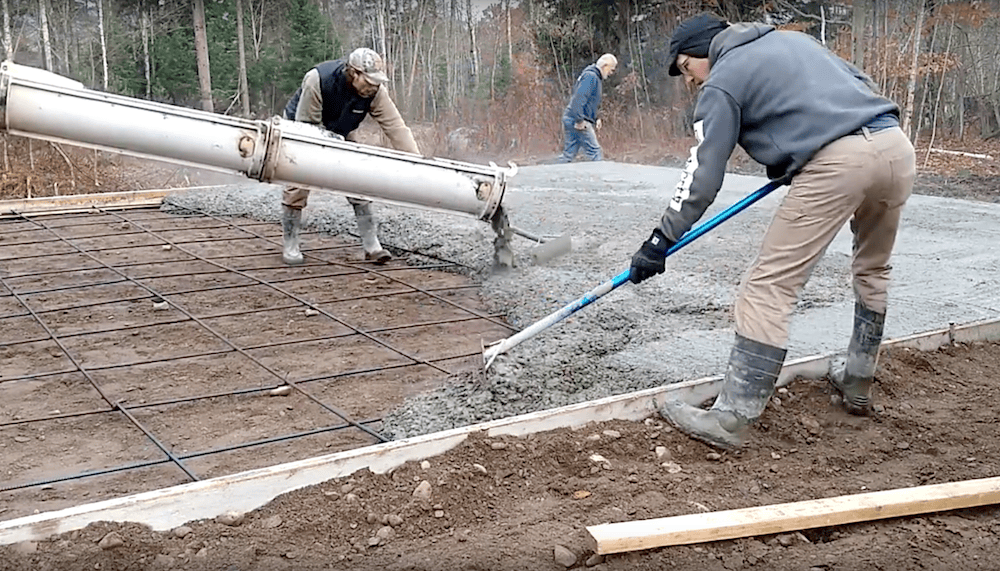
[Image above] Construction workers need to pay close attention to concrete production, placement, and protection when pouring concrete in cold weather. Credit: Kens Karpentry, YouTube
Leaving my home each morning this week has begun to truly feel like winter—snow is falling regularly now and sticks around past noon.
Though snow indicates the end of construction season for the year, sometimes critical construction projects cannot wait until spring. In those cases, construction workers need a way to pour concrete into cold or frozen ground that ensures the concrete’s quality.
Fortunately for construction workers, cold weather concrete is one of the topics covered on the American Concrete Institute (ACI) website!
According to ACI, cold weather is defined as “a period when the average daily ambient temperature is below 40°F (5°C) for more than 3 successive days.” During cold weather, lower temperatures decrease concrete’s rate of strength gain, meaning it takes concrete longer to cure. And if freezing takes place before concrete attains at least 500 psi compressive strength, its final strength can be reduced up to 50%.
Done properly, concrete poured in cool weather is advantageous, as the slow curing period results in concrete stronger than concrete poured in hot weather. To realize this advantage, though, construction workers need to pay close attention to three things: concrete production, placement, and protection.
Production
A ForConstructionPros.com article explains a concrete supplier has three methods to ensure concrete arrives at the work site suitable for cold weather conditions.
One: Raise the temperature of the water used in the mix
According to the article, water should be 140–180ºF, “but temperatures above 180ºF will compromise the mix.”
Two: Control the amount of air in the concrete
It is important that the concrete batch contains a specified amount of air for a particular project, as air entrained voids resist freezing and thawing.
Three: Add more cement or accelerators to the mix
Additional cement can provide extra heat when the mix hydrates, and “to ensure early compressive strength, batch plants can modify the mix by adding accelerators to speed up the curing process.”
Placement
When pouring concrete, it should not be placed on frozen ground—the ground and forming components should be relatively the same temperature as the mix.
Heaters can be used to thaw the ground before concrete is poured; insulated blankets and plastic foam panels can be used to insulate the forms.
Protection
Once poured, concrete must be kept from freezing while it cures. Polyethylene sheeting, insulating blankets, and heated enclosures are all methods to keep the concrete warm.
However, it is also important that the concrete avoid rapidly cooling following the curing period, as sudden cooling of the concrete surface while the interior is warm may cause thermal cracking.
“Methods for gradual cooling of concrete include loosening the forms while maintaining cover with plastic sheeting or insulation, gradual decrease in heating inside an enclosure, or turning off the heat and allowing the enclosure to slowly equilibrate to ambient temperature,” a Portland Cement Association article recommends.
Interested in learning more about the proper way to pour concrete in cold weather? Check out this video by Concrete Sensors, a U.S.-based concrete technology company.

Credit: Concrete Sensors, YouTube
Author
Lisa McDonald
CTT Categories
- Cement
- Construction
Spotlight Categories
- Member Highlights


